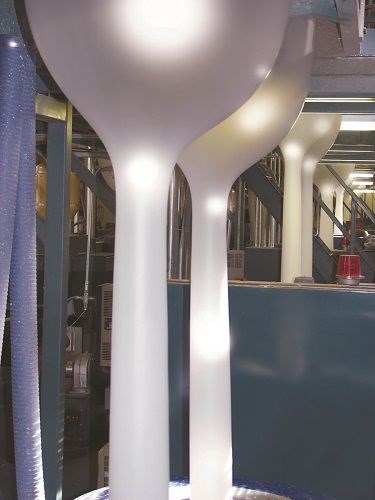A Step In 'Right' Direction: Nova Chem. Drops PE Contract Prices
One major PE player is offering the first reduction on PE contract prices in two years. Will others see fit to do the same?
With an effective date of Nov. 1, polyethylene supplier Nova Chemicals, Calgary, Alberta (U.S. office in Moon Township, Penn.), has reduced November PE contract prices of prime resin by 3ȼ/lb, effectively marking the first move in two years to reduce North American PE prices. Since the Nov. 2012, 2ȼ/lb decrease, PE prices moved up 21ȼ/lb—a period during which PE suppliers have enjoyed hefty profit margins.
Whether we’ll see other major PE suppliers take similar actions remains to be seen but some industry pros venture that something different needs to take place, as North American PE suppliers are outpricing themselves from world markets. Michael Greenberg, CEO of The Plastics Exchange, reported recently that weakness in global energy, feedstock and resin prices are contributing factors to the “negative sentiment” gripping the domestic polyolefin market. Moreover, spot PE prices have moved lower—about 4-5 ȼ/lb below this season’s highs--as there are now ample supplies of most PE grades. “Sellers continue to offer material aggressively, seeking to quickly flip railcars rather than take on additional resin for future sale. However, processors—many of whom already have ample supplies, were ambivalent to the cheaper offers as they feel the market is trending lower,” Greenberg reported on Nov. 14.
For the last two years, Mike Burns, v.p. for PE at Resin Technology, Inc. (RTi) has consistently driven the point that while the price of oil has nothing to do with the cost to make a pellet in North America, it has everything to do with the price of pellets. He recently stressed that the quickly changed PE market dynamics have surfaced from the unexpected drop in oil and naphtha prices. Burns also noted that regardless of the still relatively tight supplies, North American PE suppliers will need to address the global price that is set by the price of oil and make downward adjustments.
Burns cited two market changes that would force domestic PE suppliers to respond to today’s PE price level: an escalation of imported finished goods such as stretch film and can liners; and, the build-up of supplier inventories outpacing demand. He also saw two choices for North American PE suppliers: a proactive move whereby they gradually decrease prices regardless of still tight inventories; or, a reactive one, whereby suppliers wait until their inventories build up without an export market, supply outpaces demand, and sales are lost to Asia PE manufacturing.
IHS analysts, and other industry experts, all concede that processors are not likely to directly benefit from shale gas development lower energy and feedstock costs until new PE capacity comes on stream—most likely in the 2017-1208 time frame. At the same time, they forecast a 4.4%/yr increase in demand (1.2 times that of GDP) and roughly flat PE prices for the remainder of this year and through 2015.
Want to find or compare materials data for different resins, grades, or suppliers? Check out Plastics Technology’s Plaspec Global materials database.

Related Content
-
Consistent Shots for Consistent Shots
An integral supplier in the effort to fast-track COVID-19 vaccine deployment, Retractable Technologies turned to Arburg and its PressurePilot technology to help deliver more than 500 million syringes during the pandemic.
-
What to Look for in High-Speed Automation for Pipette Production
Automation is a must-have for molders of pipettes. Make sure your supplier provides assurances of throughput and output, manpower utilization, floor space consumption and payback period.
-
Medical Tubing: Use Simulation to Troubleshoot, Optimize Processing & Dies
Extrusion simulations can be useful in anticipating issues and running “what-if” scenarios to size extruders and design dies for extrusion projects. It should be used at early stages of any project to avoid trial and error and remaking tooling.















